Model Context Protocol (MCP) finally gives AI models a way to access the business data needed to make them really useful at work. CData MCP Servers have the depth and performance to make sure AI has access to all of the answers.
Try them now for free →Analyze BigCommerce Data in Infragistics Reveal
Use the CData API Server to create an OData API on top of BigCommerce data and visualize live BigCommerce data in Ingragistics Reveal.
Reveal is a data visualization solution provided by Infragistics and can be paired with the CData API Server and BigCommerce ADO.NET Provider to build dynamic dashboards from live BigCommerce data. The CData API Server generates an OData API for BigCommerce, which is natively consumable in Reveal. In this article, we walk through connecting to BigCommerce in API Server and connecting to the API Server from Infragistics Reveal to create a simple dashboard.
Connect to BigCommerce from API Server
CData API Server uses a straightforward, point-and-click interface to connect to data sources and generate APIs.
- Open API Server and click Settings -> Connection -> Add Connection
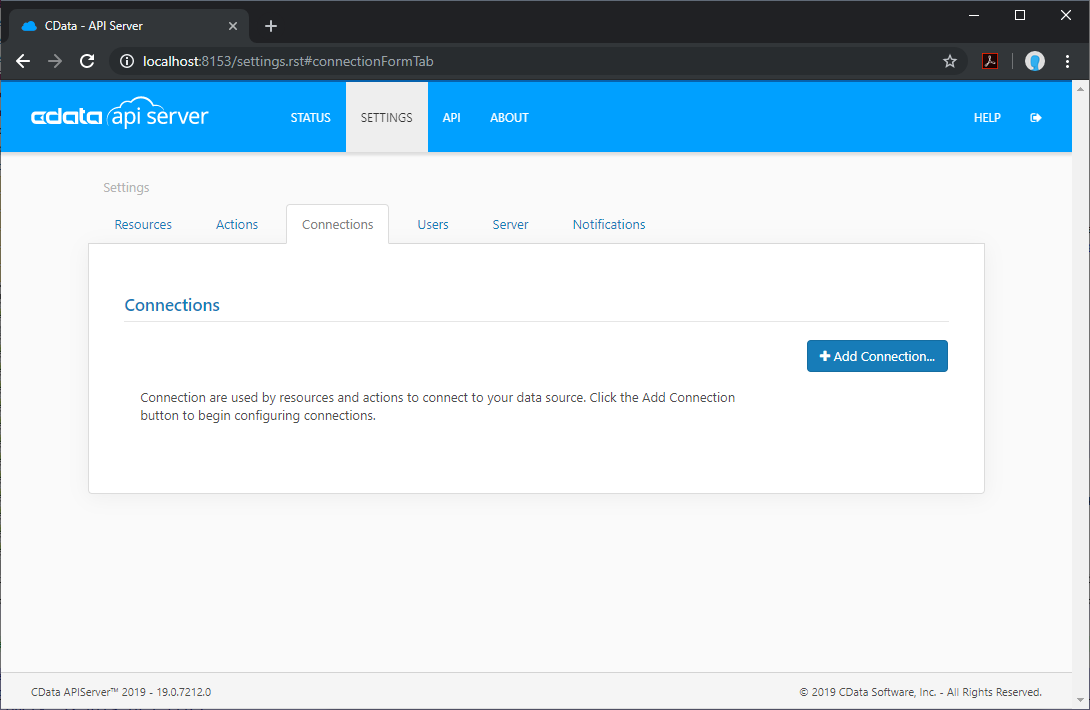
- Select "BigCommerce"
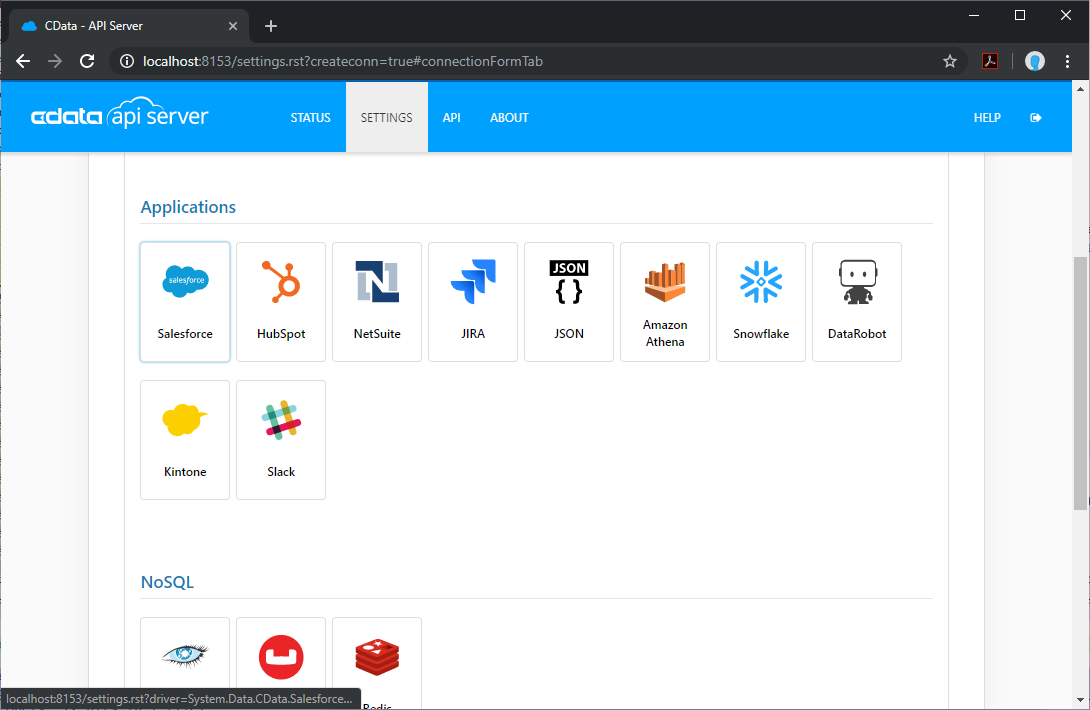
- Enter the necessary authentication properties to connect to BigCommerce.
BigCommerce authentication is based on the standard OAuth flow. To authenticate, you must initially create an app via the Big Commerce developer platform where you can obtain an OAuthClientId, OAuthClientSecret, and CallbackURL. These three parameters will be set as connection properties to your driver.
Additionally, in order to connect to your BigCommerce Store, you will need your StoreId. To find your Store Id please follow these steps:
- Log in to your BigCommerce account.
- From the Home Page, select Advanced Settings > API Accounts.
- Click Create API Account.
- A text box named API Path will appear on your screen.
- Inside you can see a URL of the following structure: https://api.bigcommerce.com/stores/{Store Id}/v3.
- As demonstrated above, your Store Id will be between the 'stores/' and '/v3' path paramters.
- Once you have retrieved your Store Id you can either click Cancel or proceed in creating an API Account in case you do not have one already.
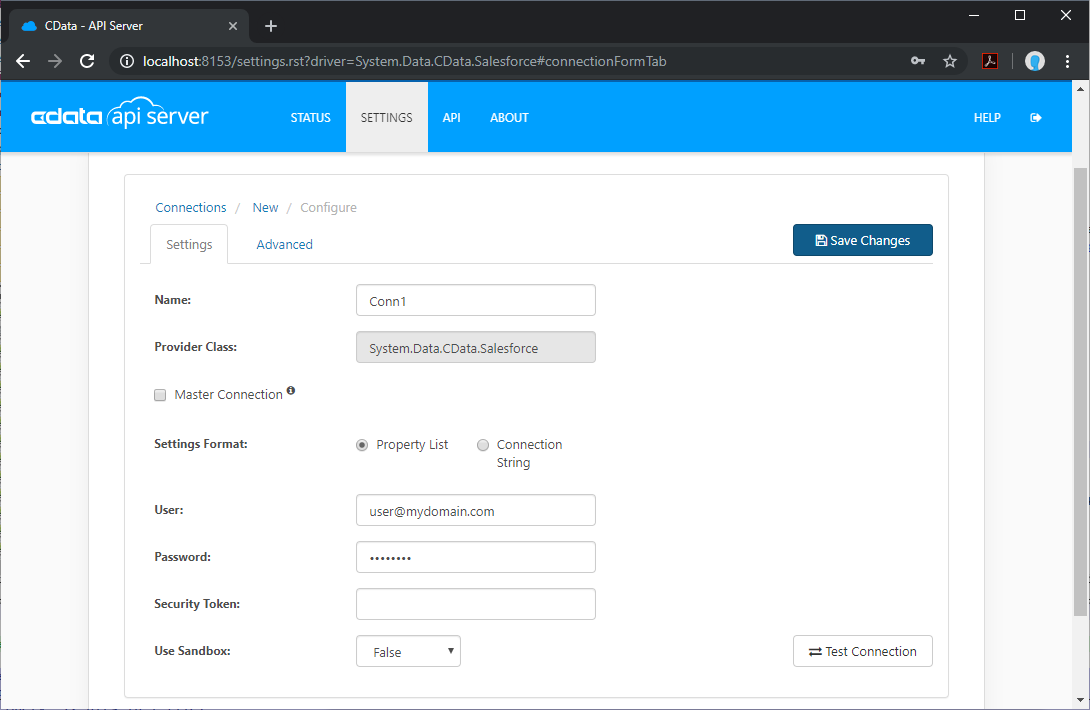
Add BigCommerce Resource Definitions in API Server
After connecting to BigCommerce, create Resources, which represent API endpoints for BigCommerce data.
- Click Settings -> Resources -> Add Resource
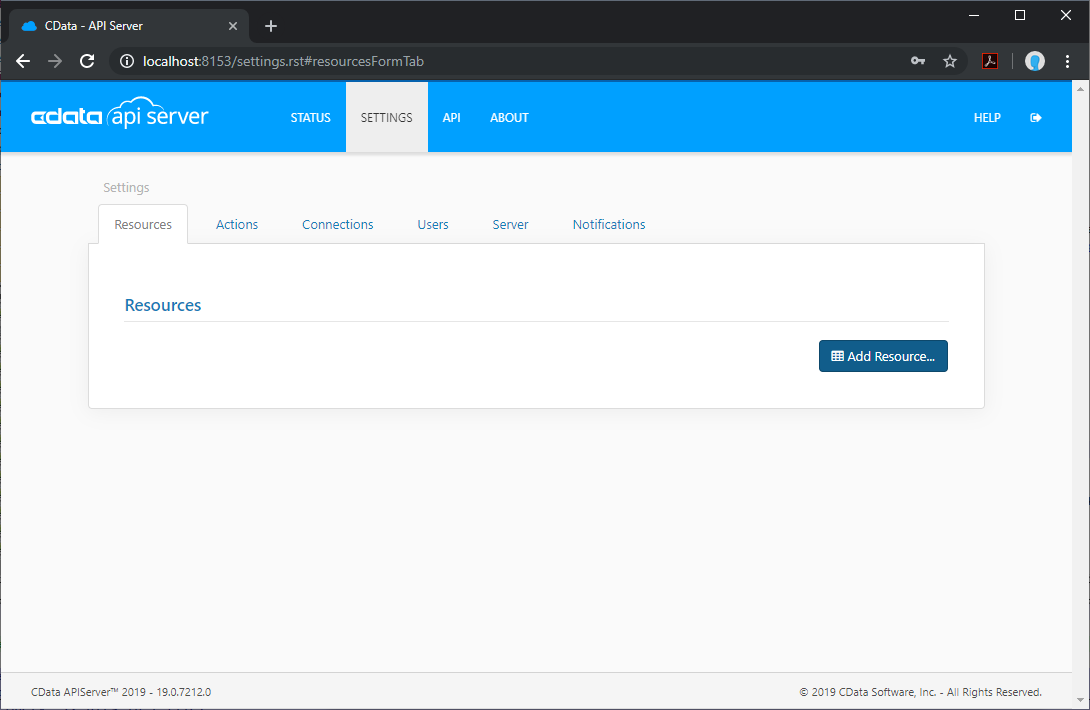
- Select the BigCommerce connection
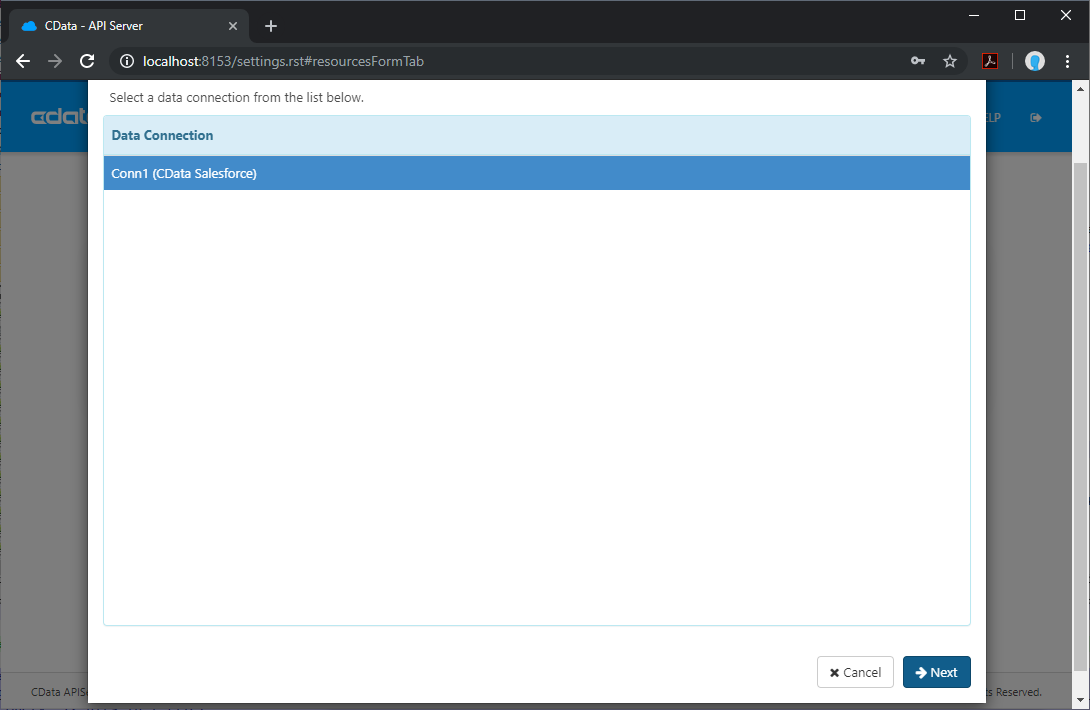
- Select the table you wish to retrieve and click Next
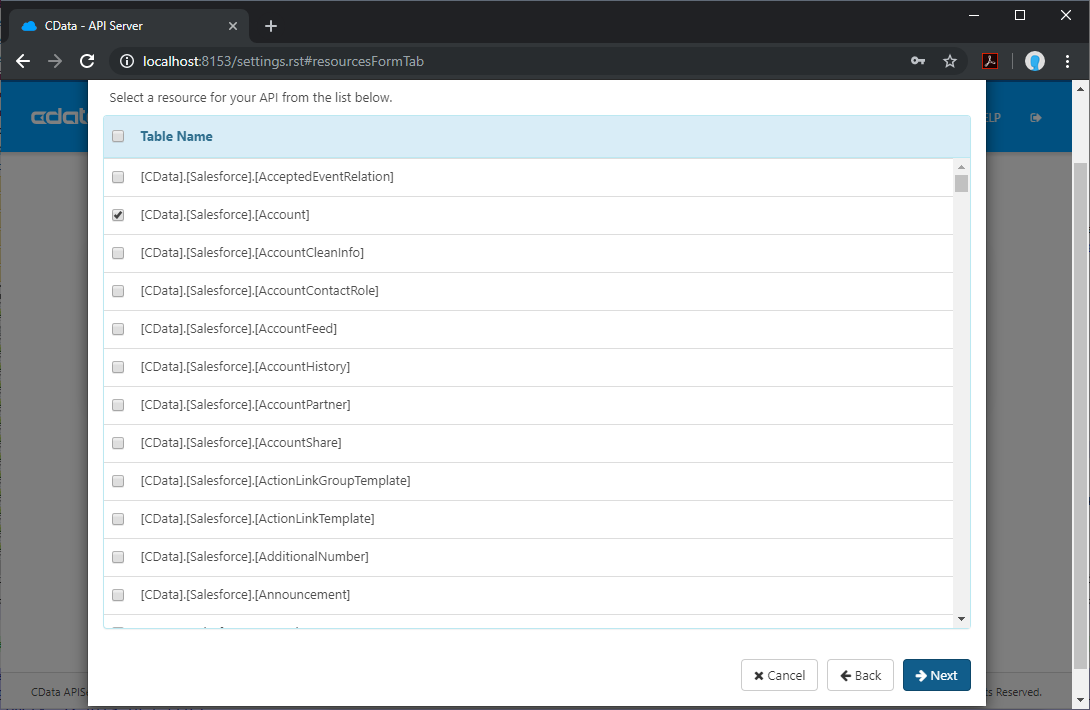
- (Optional) Edit the resource to select specific fields and more
- Save the settings
Add an API Server User
Create a User to connect to BigCommerce from Reveal through API Server.
- Click Settings -> Users
- Click Add
- Configure a User with access to the BigCommerce Connection and Resource(s)

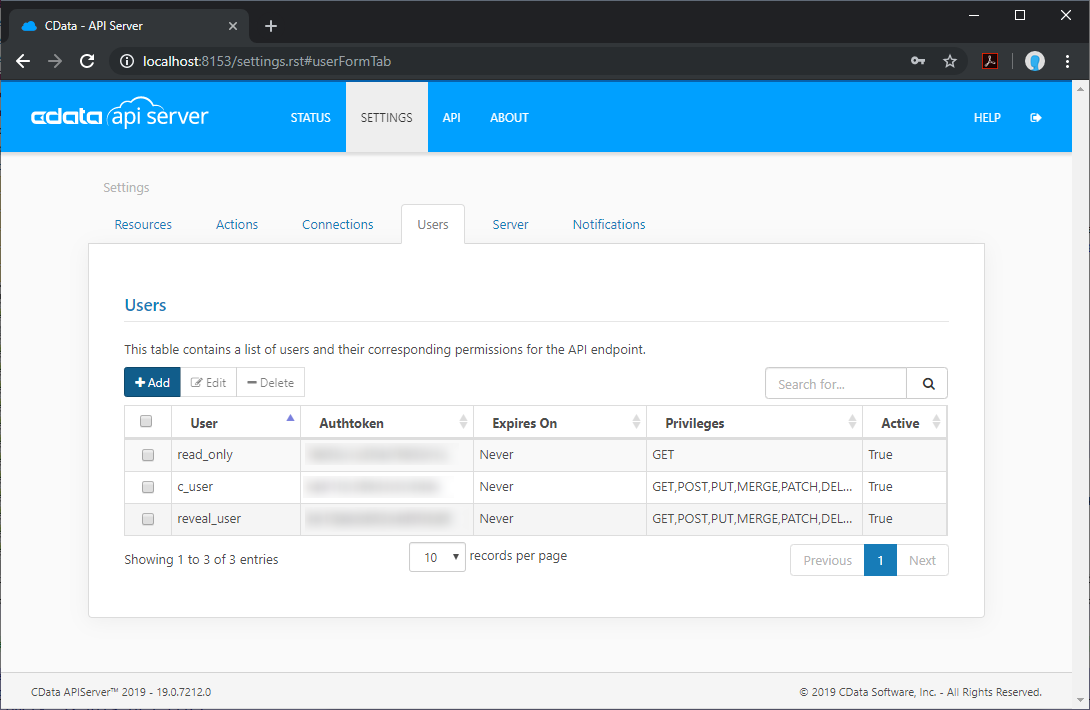
(Optional) Configure Cross-Origin Resource Sharing (CORS)
When accessing and connecting to multiple different domains from an application such as Ajax, there is a possibility of violating the limitations of cross-site scripting. In that case, configure the CORS settings in Settings -> Server.
- Enable cross-origin resource sharing (CORS): ON
- Allow all domains without '*': ON
- Access-Control-Allow-Methods: GET, PUT, POST, OPTIONS
- Access-Control-Allow-Headers: Authorization
Save the changes to the settings.
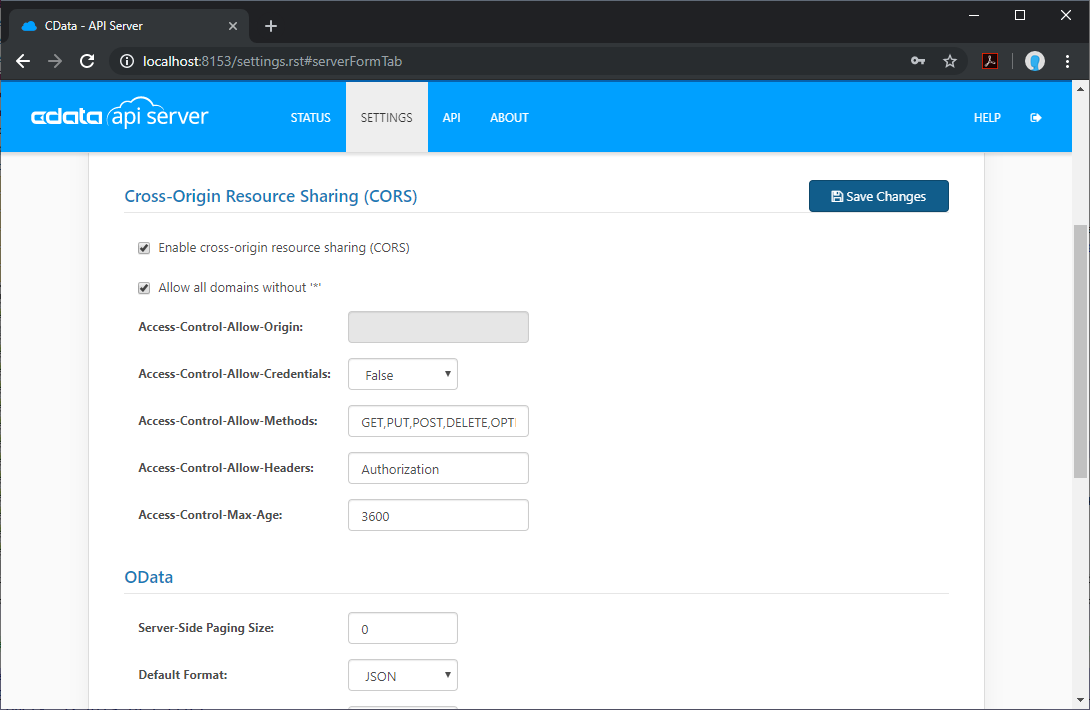
Create a Dashboard in Reveal
With the API Server configured, we can visualize BigCommerce data in Reveal.
- Log into Reveal and click Dashboards -> New
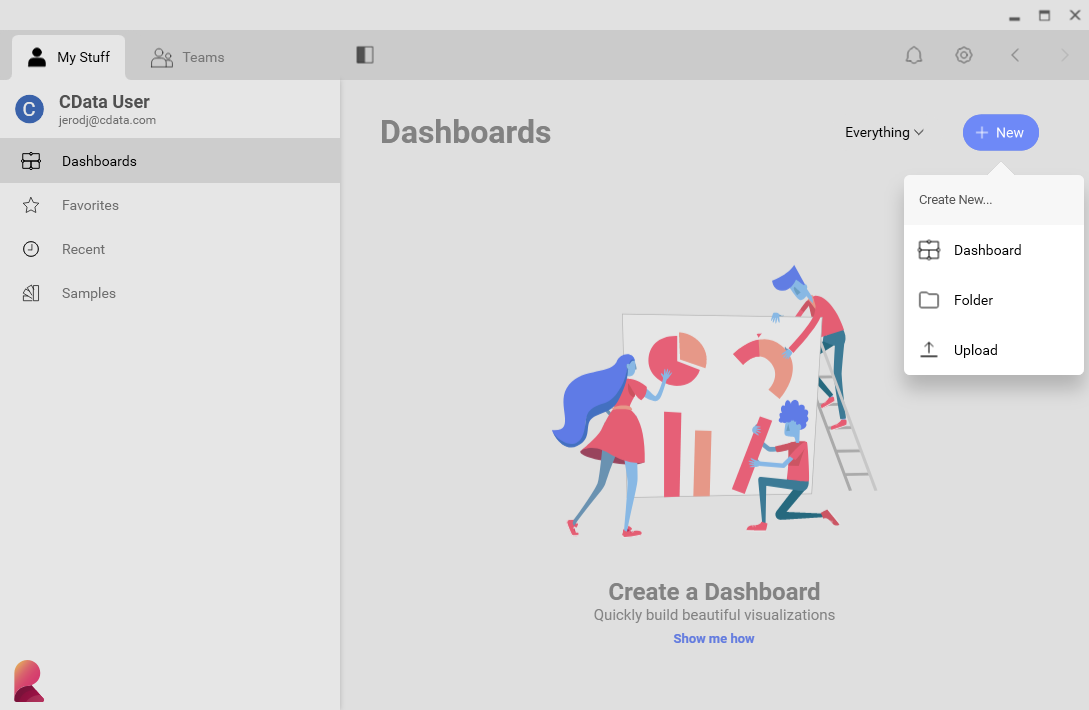
- Click Data Source -> OData Feed

- Specify the API Server API endpoint URL, for example: https://serverurl/api.rsc
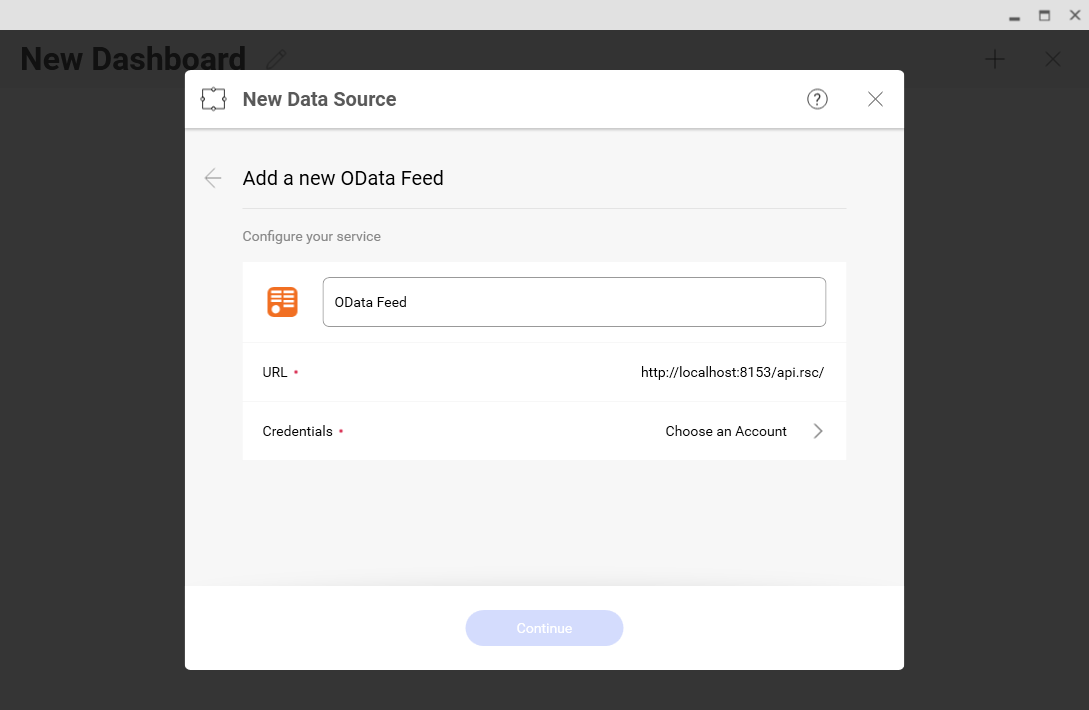
- Select Generic Credentials and specify the API Server username and authentication token
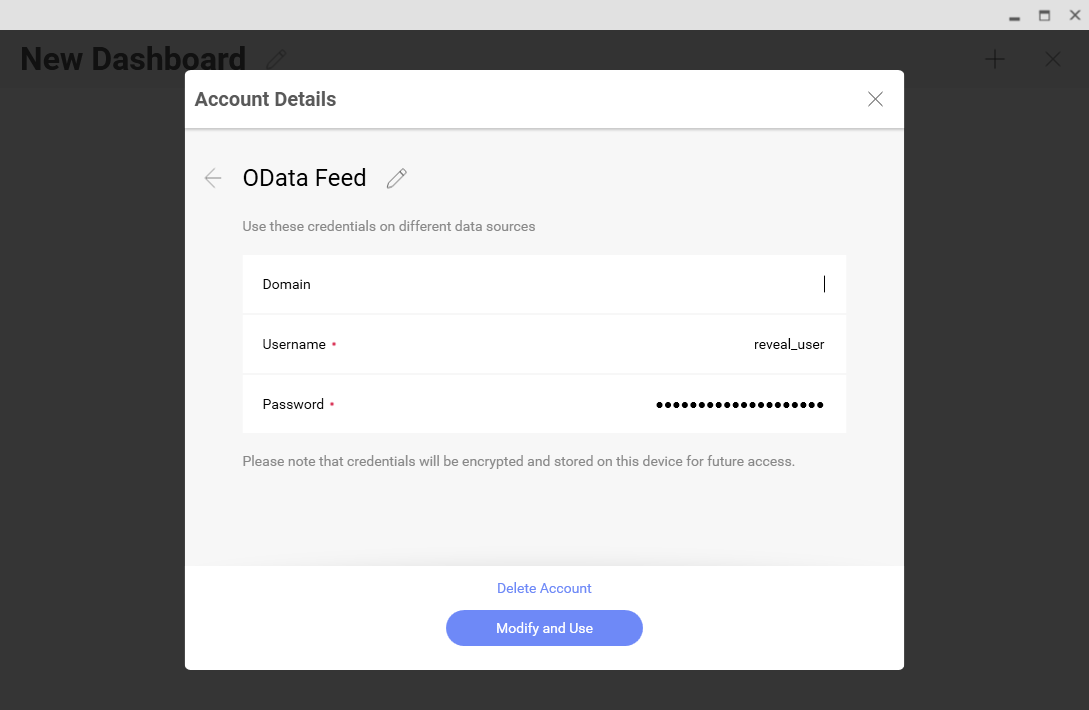
- Select the entity you wish to visualize
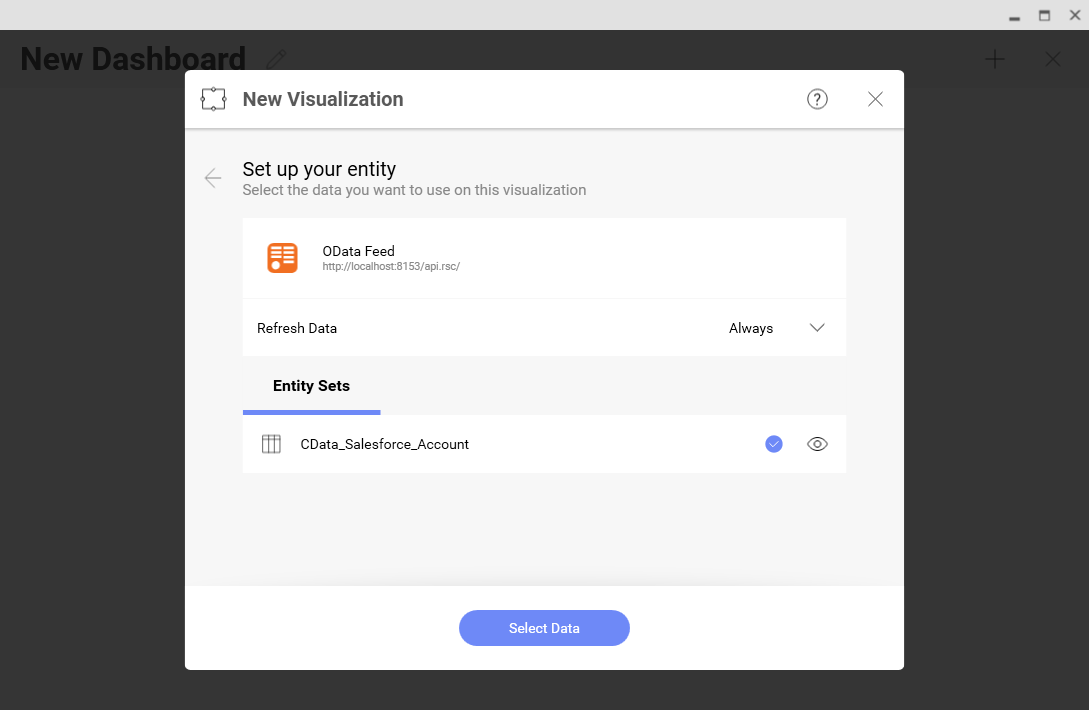
- Select fields and choose a chart type
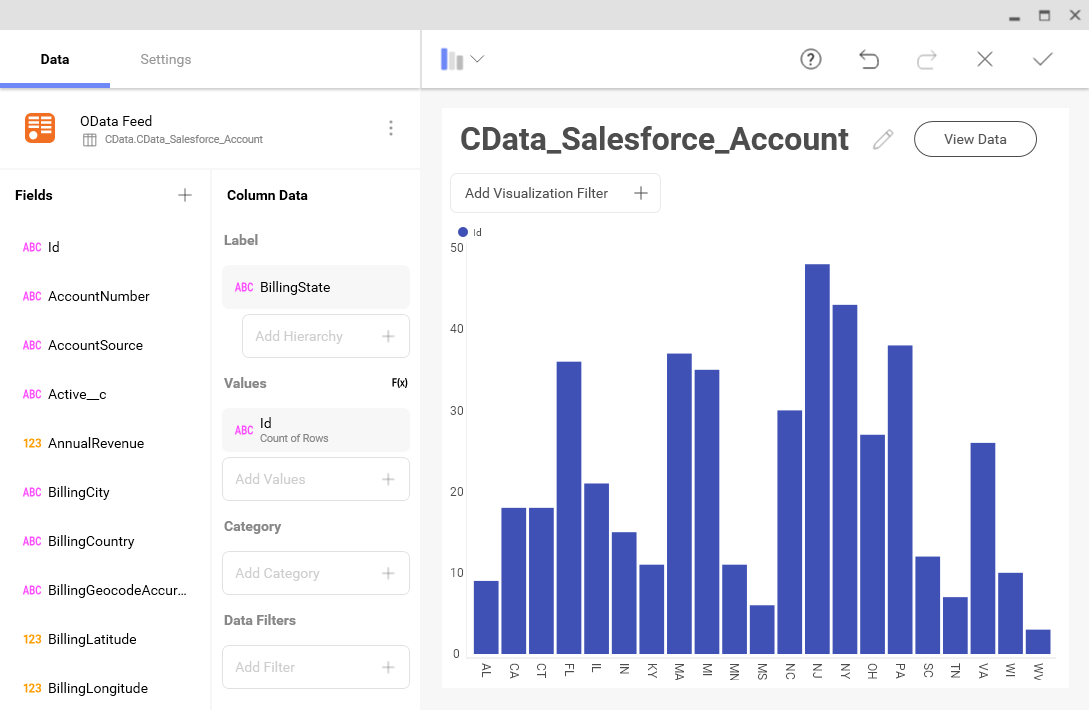
More Information & Free Trial
At this point, you have created a simple dashboard from live BigCommerce data. For more information on creating OData feeds from BigCommerce (and more than 150 other sources), visit the API Server page. Download a free, 30-day trial and start working live BigCommerce data in tools that consume OData APIs.
